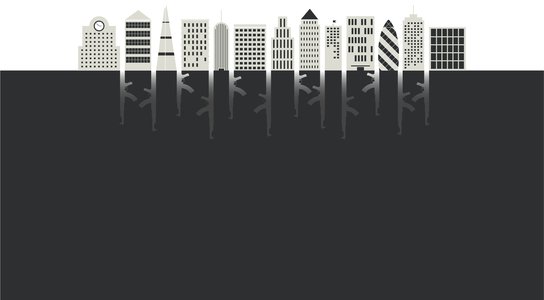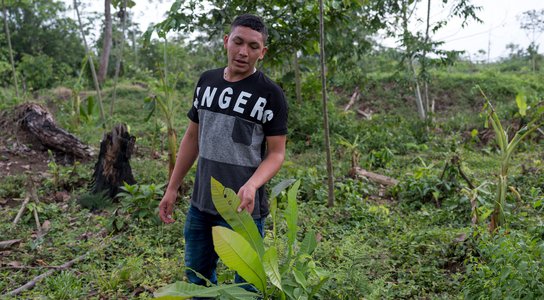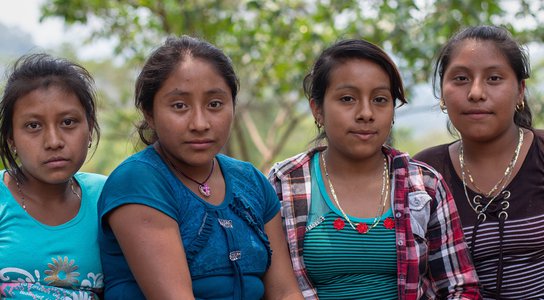“We could organise a car crash, we could organise poisoning you, we could organise all of these sorts of things.”
“We want you dead. We will succeed.”
Such words could easily be those of a Mexican drug lord embroiled in a life of violent crime, or an FSB official – Russia’s notorious secret service. But these death threats were made much closer to home last week, against one of the UK’s longest-standing wildlife campaigners: Chris Packham. The reason behind the intimidations? Simply that the Wild Justice group he co-founded successfully challenged the legality of a licensing system that allowed the shooting of a number of wild birds.
Conflicts over land, its control and its use are central to these growing patterns. Add to this a burgeoning inequality, and concentrated land ownership in the hands of an elite and you have a perfect storm.
Latin America is a classic example of this. Extreme inequality in land ownership is one of the main drivers of social and economic inequality in the region. Much of the increasing violence, assassinations and repression against defenders in the region is linked to land conflicts when community land is grabbed for profit by outside private investors, companies, governments, and national elites.
Such violence is reflected in the figures: Global Witness data shows that at least 201 environmental defenders were murdered in 2017 – the highest total we’ve ever recorded – and almost 60% of the murders registered were in Latin America. Brazil saw the most deaths ever registered in one year in any country, 80% of them while protecting the natural riches of the Amazon. In Colombia, 24 defenders were murdered in 2017, as conflicts over land raged on.
Who owns the land?
Whilst England thankfully doesn’t suffer the same levels of violence, when you dig behind land ownership in England, the same issues surface and the threats made against Chris Packham begin to make a little more sense.
This is exactly what Guy Shrubsole does in his new book, ‘Who Owns England?’' His investigation over several years has revealed that half of England is owned by less than 1% of the population. The result of historical land grabs which took place between the 17th and early 20th century, Shrubsole shows how land has been systematically stolen from ordinary people, and now “a few thousand dukes, baronets and country squires own far more land than all of Middle England put together.” Shrubsole’s investigations into who owns English shooting estates and grouse moors – the latter just over half a million acres – reveal a powerful network of aristocrats and gentry, wealthy businessmen and women, City bankers, hedge fund managers, and Saudi princes. Shrubsole also estimates that 18% of England is in the control of corporate structures and offshore companies, many of them opaque. Our own analysis has discovered that across England and Wales this ‘anonymously-owned’ land and the property that sits on top of it is likely to be worth more than £100 billion. (For more on our campaign to bring transparency to UK land ownership – see here).
In whose interest?
The struggles for land are related to power and processes of empowerment. Whether land represents an important cultural resource or an economic asset, those who control land rights have a certain amount of power over those who do not, especially in rural areas.
And it is the same pattern that we see the world over: concentrated land ownership in the hands of an elite few that is bent on protecting its own interests, whether that involves the killing of birds here in England, or can lead to the killing of people that get in the way, from Guatemala to the Philippines.
Here in the UK, the history of land grabbing has led to a privileged land-owning elite who believe that they can act with impunity, no matter what challenges are made to their way of life.
In developing countries, the fight is often over the land itself, with communities traditional livelihoods threatened by corporate and vested interests of those wanting to turn a quick profit.
As Shrubsole points out, land is “a common resource that everyone depends on” – for food, medicine and spiritual beliefs; for homes, livelihoods and the natural landscapes that keep our air clean and provide fresh water. It is a burning issue the world over, reflected in the increasing levels of violence and criminalisation of defenders seeking to protect their territories.
What has to happen?
The power structures outlined in this blog are one piece of the puzzle in trying to understand where moral or legal responsibility might lie for the kind of violence and threats no person should have to endure. But it’s governments and major businesses that are enabling and funding large scale land grabs globally, putting defenders at risk in the name of profit.
What can be done? Firstly, it’s critical that we amplify the voices of land and environmental defenders, so that their message can be heard loud and clear. You can share this video of defenders Ramon, Marivic and Maria below to take the first step in doing this.
Next, get involved. For years, Global Witness, along with our many partners, has tracked and recorded attacks against defenders and the industries in whose sphere such killings are centred. Sign up to our campaign to find out exactly what we’re asking of governments and businesses, and how you can echo our call.
Finally, if you’re based in the UK, and you’re concerned about some of the patterns laid out in this piece, write to your MP, and raise your concerns. As the Environment Bill approaches Parliament over the next year, it’s just as important we are aware of any constraints on environmental protest in the UK – as well as being conscious of the country’s business footprint abroad, and the threats that may create for land and environment defenders globally.


